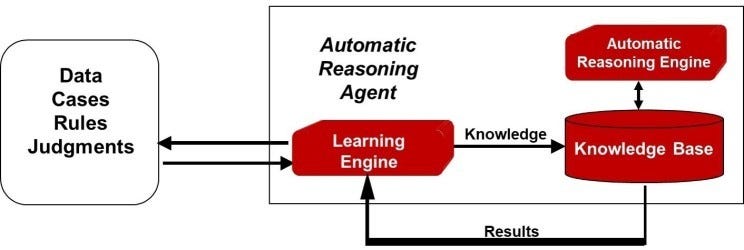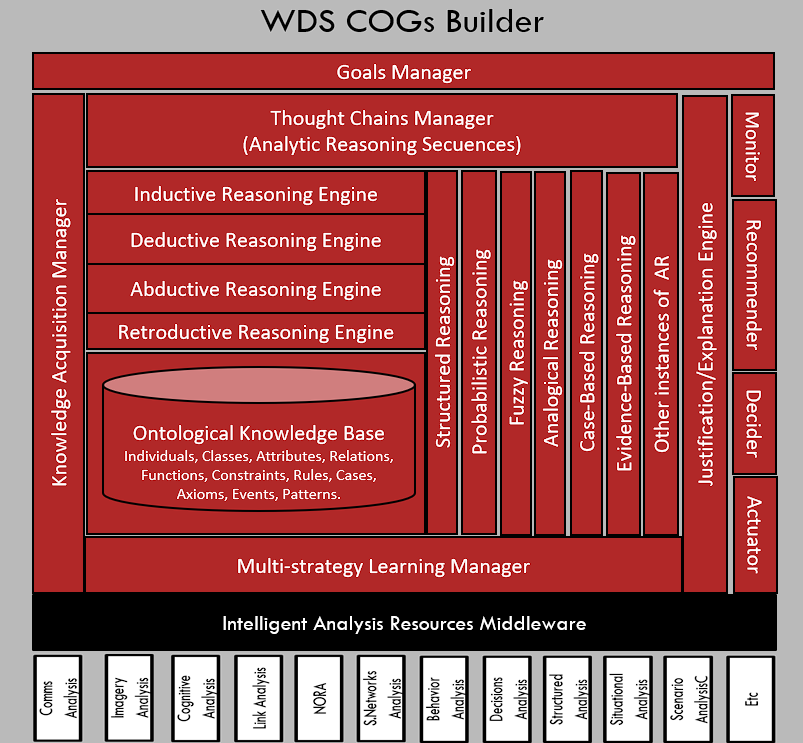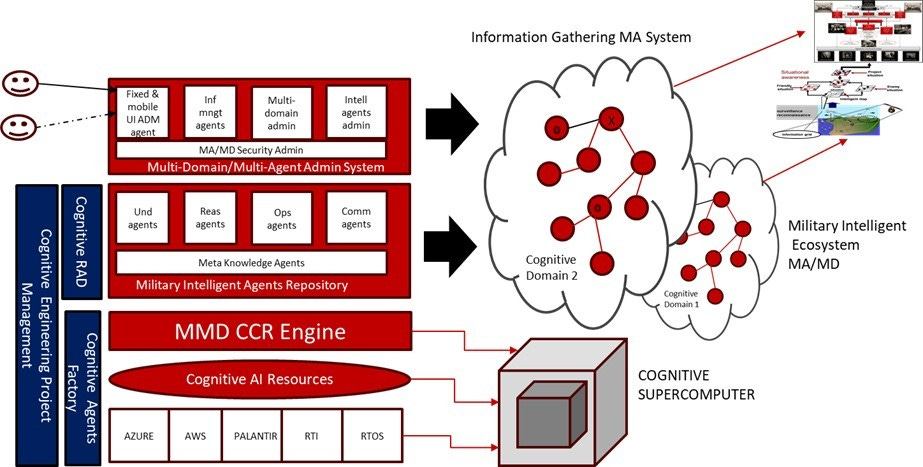Smartification of weapons, weapons systems, and combat platforms
Executive abstract of the forthcoming professional white paper on multi-domain battlefield superiority enabled by Distributed Complex Reasoning Systems Architectures (DCRAs)
Context and purpose
I am sharing an executive abstract of a comprehensive professional white paper that we will publish shortly, co-authored by me, in the design & engineering department, and by my illustrious mentor, Andrés Pedreño Muñoz, on the economic analysis and impact of this technology for European sovereignty.
As a founding father and international authority on complex reasoning systems, I consider this work essential. What I call Smartification, which we have already presented with appropriate safeguards to several major American contractors, often meeting equal parts success and disbelief that in Spain we are pursuing truly disruptive ideas, can revitalize and enhance current arsenals, weapons systems, and combat platforms by introducing autonomous and collaborative behavior within a fully multi-domain approach.
This preview also offers a glimpse of projects under development at Binomial Consulting & Design and at WarMind Labs, our military AI lab at the Torre Juana OST IA Hub. We remain open to the European and U.S. defense industry, sharing our advances with our armed forces and institutions.
Executive abstract
Key definitions and terms: Smartification; Complex Reasoning Systems Architectures; Multi-Domain; Intelligent Military Ecosystems; CAgents; SIL and GOSIL Agents; Abstract Cognitive Entities (ACEs); Search-Inference-Framework; Multi-Agent/Multi-Domain Engineering; DCRAs.
1) Introduction
I define Smartification as the process of introducing reasoning capabilities into weapons, weapons systems and combat platforms so that each system can exhibit intelligent, planned, adaptive, and evolving behavior, autonomously and collaboratively, according to the mission, the situation, and the operational, tactical, and communications context (Luis Martín “The Druid”, 2025).
The modern multi-domain warfare paradigm, together with recognition of opponents’ state-of-the-art capabilities, requires modeling an intelligent military ecosystem that enables battlefield superiority under complex conditions. This ecosystem rests on advanced complex reasoning architectures operating in real time, supporting adaptive courses of action driven by mission planning, command and control, shifting objectives, and evolving combat scenarios.
I use Complex Reasoning Systems to refer to the AI subdiscipline whose antecedents are bioneurocognitive automatic reasoning systems and complex systems, designed to link structures of models, submodels, and reasoning techniques to generate adaptive and evolutionary search-inference-learning sequences. Their purpose is to fulfill both self-imposed objectives and those defined by the intelligent ecosystem, yielding emergent properties of self-repair, self-preservation, and self-reference in unconventional reasoning (Luis Martín “The Druid”, 2025).
A Complex Reasoning Systems Architecture is the structured set of intelligent agents and entities that enables the inference sequences required to achieve mission objectives in a timely manner, autonomously or collaboratively, using the resources provided for that mission (Luis Martín “The Druid”, 2025).
2) Agents, entities, and processes in Smartification with DCRAs
In this white paper I focus on intelligent, cognitively based agents (CAgents). Work on Abstract Cognitive Entities (ACEs) remains classified.
Figure: Model of a SIL Reasoning Agent operating on data and on complex evidence structures such as cases, fuzzy multi-modal logic rules, and structured judgments.
I emphasize GOSIL agents, a model I created, inspired by Baron at the University of Pennsylvania, who framed actions and objectives within a common search-inference framework. Building on that behavioral model, I introduced systemic interaction within an intelligent agent among information-search models, the reasoning processes to be executed, and the specific and general objectives of the ecosystem it belongs to. Consequently, search strategies, in military multi-agent contexts called IIDR structures (Information Indexing and Recovery Structures), depend on the enabled reasoning sequences and on objectives at both the agent and ecosystem levels.
Figure: Basic operating model of a GOSIL reasoning agent (Goal-Search-Inference-Learning)
This model provides the ability to:
Plan, prioritize, and manage complex goals
Plan and simulate complex goal-guided reasoning sequences (reasoning strategies)
Run goal-based reasoning sequences in real time
Justify and explain reasoning processes
Store and manage complex ontological structures of actionable knowledge
Automatically acquire knowledge from data, documents, and human experts
Optimize reasoning processes through multiple learning strategies
Continuously incorporate new intelligent analysis resources
A key engineering concern is the distribution of processing loads within each agent and across agents that govern a weapon, a weapons system, or a combat platform. The balance between search complexity and indexing and cognitive power is decisive for the software, hardware, or firmware platform that will Smartify these systems. For example, an intelligent weapon with autonomous situational, spatial, deliberative, and decisional reasoning, organized in dynamic sequences according to the weapon’s objective and its ecosystem, may require a real-time sensory environment acquiring thousands of data points per millisecond and an indexing model based on complex ontologies to enable the reasoning assigned to the Smartifier agent. This balance defines the network of agents and how search and reasoning loads are encapsulated.
Figure: Simplified view of a Smartification process by LMT “The Druid”, encapsulated in an intelligent agent for autonomous recognition and analysis of covert military installations on a UAV.
3) Multi-agent and multi-domain engineering needs
To operationalize the above, we propose a platform for engineering and developing multi-agent and multi-domain military intelligent ecosystems, comprising:
A repository of military intelligent agents, that is, cognitively based complex reasoning capabilities which enable mission execution, manufacturing-plan prioritization, and optimal testing in laboratory and field, crucial for superiority through Smartification in multi-domain environments.
Reasoning engines that operate centrally or in a distributed manner, delivering remote reasoning or running embedded on dedicated hardware for weapons, weapons systems, and combat platforms.
An agent and domain management system, a rapid-prototyping engineering environment, and cognitive supercomputing capabilities. (Specific details are not disclosed for confidentiality).
Figure: Overview of WarMind Labs’ Ecore architecture, designed by Luis Martín “The Druid”, to generate multi-agent and multi-domain military ecosystems based on Smartification, integrated with centralized or distributed C4ISTAR platforms for autonomous and adaptive combat operations.






